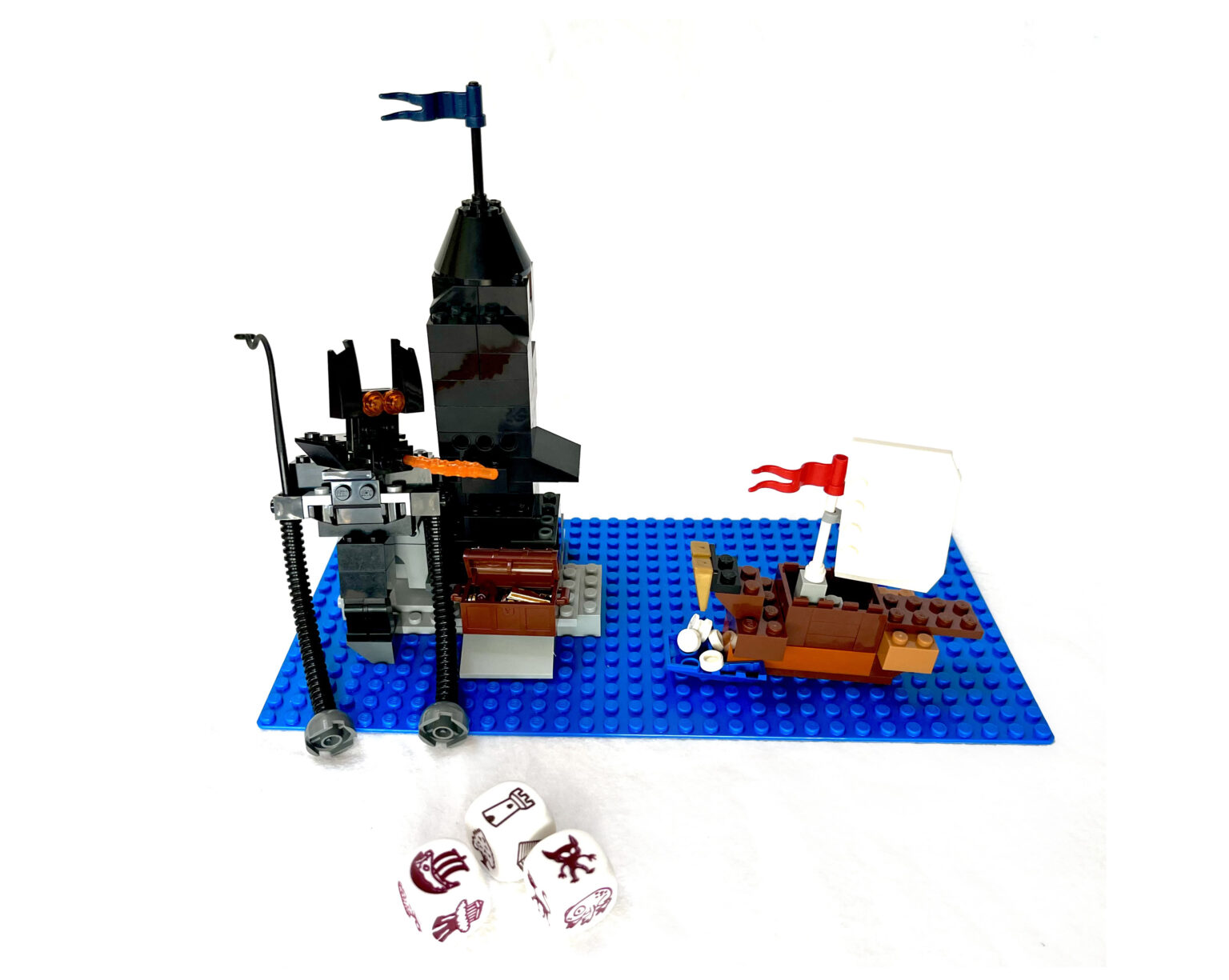Collaboration – Build with story cubes
We come up with a story from story cubes, and continue to build things from the story together. The purpose of the activity is to let the imagination run loose and come up with complex stories from simple pictures that the cubes show us.

Procedure
Framework
Suggestion for introduction
We create a motivating environment for the children.
For example, we can say: “We practice building together. Maybe we’ll learn something new about each other, like how to come up with a story together. Today, we tell a story from the story cubes and then we build it with e.g. Lego. We take turns rolling the story cubes and come up with new stuff for our story with the pictures on the cubes. Maybe our shared story is about a witch that wants to bake a cake and then drive a racecar. The cubes make the decision for us.”
Time
The activity can be adapted to the framework of one lesson and varied according to the time available and the children’s prerequisites.
Materials
We need materials to build with and story cubes. You can make them yourself or buy the “RORY STORY CUBES”. They have pictures of all kinds of things: witches, flowers, emojis, lightning, and so on. All that matters is that we enjoy coming up with stories from the cubes.
During the activity
During the play session, the children encounter challenges and successes, where we can stop and help spot what is difficult or what is going well. We can do this in several ways:
Reflection routines
When we get the opportunity to reflect together with the children on what challenges or discoveries arise along the way, we can use one or more reflection routines. It could be, for example, a learning metaphor with a social strategy that we practice, an emoji that describes the feeling we have right now, or a rating of how well we think the building is going. In this way, a reflection routine can help to show and put into words the experiences that the children have during the play session.
Facilitating questions
We can ask facilitating questions to the children along the way, as they naturally arise in the building process. In this way, we facilitate the play session so that we continue the play and at the same time learn something from it. For example:
- I see that you have stopped building. I wonder how we can continue from here?
- I see that you have encountered a challenge. Should we try to solve it together?
- Try to notice what you are doing right now. Do you think this is a collaborative strategy?
Show and Tell
Finally, in the play session, we give a Show and Tell of our construction, so that we have the opportunity to share our experiences, reflections, and feelings about the construction process.
First, we talk about our model and the process of building it. During the Show and Tell, we can use reflection routines and reflective questions to support the discoveries that have been made. For example:
- What went well?
- What was difficult?
- Is there anything that you want to do differently the next time we are building?